How to Get Enough Protein in Your Diet

Bicep curls, chest presses, bent-over rows, and push-ups are just a few staples towards getting yourself to a toned, bulky body that you’re proud of. But have you ever spent a long day working out only to wake up in complete, sore agony?
Trying to work out as much as possible is important for speeding towards your overall fitness goals, but when you can’t even move a muscle, how are you supposed to make them bigger? The reason for your muscle soreness might have nothing to do with your workout — it might be entirely related to your diet.
Protein is one of the most important nutrients to help your muscles rebuild faster and stronger than ever. The thing is, you might not be getting nearly enough of it.
Let’s take a look at how much protein should be incorporated into your diet, as well as some easy ways to get more protein without completely revolutionizing your routine.
The Power of Protein
The burning sensation that you feel in your arms, legs, back, chest, or core during a total-body Gorilla Bow exercise is one of the more satisfying things in life. But feeling sore and achy the next day isn’t as great.
That sore sensation is actually your muscles healing. And even though your HIIT routine isn’t injuring you, your muscles are actually undergoing a ton of strain. When you pump iron and lift weights, tiny tears form in your muscles. When they rebuild, they come back a little stronger than before. That’s why lifting weight helps you pack on muscle mass.
However, the healing process can feel painful, and that’s what causes all the sore and achy feelings the following day. This is where protein is so essential.
Proteins are complex molecules that are composed of hundreds or thousands of smaller units called amino acids. They are the primary structural components in the body, and they accelerate the rebuilding of cells in your muscles that have been exercised to the point of damage.
Essentially, this means that protein makes your muscles heal faster, which helps to avoid the soreness and achiness that is often associated with the healing process. They let you get back to the gym quicker so you can keep packing on the muscle mass.
On top of that, protein can be used to produce energy for muscle contraction as well as provide your body with more energy in general. These are even more reasons to start incorporating more protein into your diet.
How Much Protein Do I Need?
You may think that you’re getting enough protein in your diet already. However, you actually need more protein than you think if you’re looking to build more muscle.
A sedentary adult is supposed to consume 0.36 grams of protein per pound of body weight. This means that the average sedentary male needs to eat 56 grams of protein a day, and a sedentary female needs to eat 46 grams.
However, we hope you’re not living a sedentary lifestyle if you have your Gorilla Bow laying around the house somewhere. If you’re one to work out often, you need to eat more protein than is typically recommended.
In fact, if you’re trying to put on muscle, it’s suggested that you eat 0.5 to 0.8 grams of protein per pound of body weight, a stark increase from those who are sedentary. This means that you’ll need to consume somewhere between 75 and 128 grams of protein in a given day to start seeing maximum results.
Getting that much protein might sound easy, but it’s actually pretty tricky to be getting the right amount of protein in your diet.
Let’s get into some simple ways to bring more muscle-building molecules into your typical day.
Protein Rich Foods
The easiest way to start bringing in more protein-rich foods to your diet is to know exactly where the high-protein foods are. The best way to get protein is with whole, natural, plant-based foods that are also great sources of complex carbs.
These include:
- Beans
- Almonds
- Pine nuts
- Cashews
- Sunflower seeds
- Peanut Butter
- Black or pinto beans
- Soybeans
- Tofu
- Chickpeas
These plant-based proteins are examples of complex carbohydrates that are also high in starch and fiber that your body needs for energy and digestion. These are some of the best sources of protein with the least adverse side effects.
Lean meats and poultry are also excellent sources of protein. Just make sure they are not treated with harmful chemicals or growth hormones.
Some great high-protein meats include:
- Chicken
- Turkey
- Salmon
- Scallops
- Lamb
- Pork
- Shellfish
- Eggs
Finally, you can get your protein from dairy products. We just recommend that you look for low-fat options when looking for your products at the grocery store.
Some good dairy choices include:
- Cheese
- Cow’s milk, almond milk, or oat milk
- Greek yogurt
What About Protein Shakes and Bars?
Don’t get us wrong; we love a good protein shake or protein bar every now and then. They’re tasty and satisfying ways to really amplify your protein intake. However, you need to be careful.
Many protein shakes and bars taste so good because they’re extremely high in sugar. Eating too much added sugar can increase your risk for things like weight gain, heart disease, inflammation, and more. This can completely cancel out the positive effects of the protein itself.
When it comes to these protein foods, our best suggestion is to find them from whole foods such as the ones listed above. However, there’s nothing wrong with a protein treat every now and then.
Just try to look for bars or powders that are plant-based or contain low amounts of added sugar. Alternatively, you can enjoy your sugary protein treats in moderation by limiting your intake to once a week.
Tips and Tricks for Packing in Protein
Getting over 100 grams of protein into your diet every day can be challenging, especially when you think about the fact that most protein bars don’t have more than 20g in each. However, there are some super easy ways to incorporate protein into your diet without having to change things drastically.
Add Chopped Almonds to Your Salads
There’s nothing better than a fresh garden salad filled with veggies. But vegetables aren’t a great source of protein. You can make your leafy greens a haven for protein by simply adding chopped almonds as a topping. A serving of almonds contains six grams of protein.
Add that to another protein, such as chicken, fish, or feta cheese, and you might be able to make your salad a replacement for those high sugar protein shakes. Not to mention, chopped almonds add great flavor and texture.
Cheese, Please
If you’re ever feeling a little peckish in the afternoon, it’s easy to reach for the chips or the pretzels. But these are low in protein and high in calories. Instead, you can reach for a block of cheese instead.
A serving of cheese contains seven grams of protein, as well as fewer calories than alternative snack foods. Plus, it’s a great source of calcium to keep your bones nice and strong.
Geek Out on Greek Yogurt
A bowl of yogurt with some fresh fruit and granola makes for a delicious breakfast. However, you can make it a nutritious breakfast as well if you just swap out regular yogurt for Greek yogurt.
Greek yogurt is made by removing whey and other liquids, which gives it a creamier texture that’s also higher in protein. A typical serving can give you upwards of 20g of protein, which is about twice the amount of yogurt.
Just be careful of getting flavored Greek yogurts, as many are high in added sugar. Take a look at the label and try to pick brands that keep the sugar count low while keeping the protein count high.
Add Peanut Butter
Bananas and apples are delicious fruits that can be made twice as delicious by simply adding some peanut butter. Adding two tablespoons of peanut butter to your favorite fruits or a slice of wheat bread can boost the protein content by seven grams.
We think that asking you to eat more peanut butter is a pretty simple task. And you can get a similar amount of protein content from hazelnut, or almond butter spreads as well.
Toy Around With Soy
Soy products are exceptionally high in protein. That’s why tofu is such a prominent meat substitute for vegans, as the protein content is just as high as traditional cuts of meat.
A cup of edamame, or steamed soybeans, has nearly 19 grams of protein. Not to mention, it’s high in antioxidants and delicious. You can add edamame to salads or just eat it as a snack.
Additionally, you can try eating tofu every now and then in place of meat. Not only is it cruelty-free, but it also tends to be a bit safer than risking it with some meats that may have been treated with artificial hormones.
Whey Protein All the Way
Despite the fact that protein powders are often high in sugar, they really are a great way to get an exceptional amount of protein at once. You can typically get protein powder from soy, egg, or pea protein.
However, whey protein seems to have an advantage over the alternatives. Namely, it can help you feel full, which makes it great as a meal replacement and appetite suppressant.
But on top of that, a scoop of whey protein powder gives you around 17 grams of protein on average. And when you combine that with some fresh berries, Greek yogurt, and peanut butter, you’ve got yourself an insanely high protein smoothie that tastes great.
Is Too Much Protein a Thing?
Now that you know some simple ways to pack in some extra protein, you’re probably ready to eat every protein-rich food in sight. But is it possible to do any harm by consuming too much?
The short answer is yes, it is possible to eat too much protein. For instance, people with a high protein diet tend to have an increased risk of developing kidney stones. Additionally, people who get their protein from red meats with higher amounts of saturated fat might have a higher risk of heart disease and colon cancer.
So how much is too much? Everyone is different, so it’s hard to really say. For the average person who is not an elite athlete or heavily involved with fitness, you may want to try to stay under 125 grams a day. With that said, there’s some leeway if you’re really trying to bulk up.
If you’re a major protein lover who doesn’t want to cut back, just try to get your protein from healthy sources like whole plant foods or lean chicken. Additionally, try to spread your protein consumption throughout the day rather than just engulfing all 125 grams in one sitting.
Protein vs. Creatine
If you’re a fitness king or queen and you’re trying to build muscle mass, you’ve probably heard that creatine is the most important thing to supplement your diet with. It’s true that creatine can help make your muscles bigger, but it doesn’t quite work in the same way as protein.
Creatine is an amino acid located in your muscles where it is used for energy. When you take creatine supplements and increase their abundance, you allow your muscles to have more energy for heavy lifting. Essentially, creatine lets you lift stronger weights than you’d be able to normally.
However, it doesn’t aid in muscle recovery in the same way that protein does. That’s why it’s important to also consume protein in addition to creatine if you decide to use it.
Creatine is a generally safe supplement that can help to speed up muscle growth by enhancing your performance. With that said, creatine often causes weight gain, usually as lean body mass. So don’t be surprised if you start to see some tummy fat grow as your muscles do too.
Other Tips for Bulking Up
A high protein diet, combined with strength training routines, is a surefire way to get you closer to your fitness goals. However, there are some other things that can help speed up the process.
For one, hydration is key. Water helps transport nutrients between cells that are involved in producing protein, which helps to rebuild your muscles faster. Drinking a lot of water before, during, and after training can help to reduce soreness and keep your muscles strong.
Also, you may want to try to eat protein shortly after a workout during what’s called the “anabolic window,” a period of time where your muscles are especially absorbent of protein. While some research suggests this may not really matter, it never hurts to supplement your muscles with a protein snack after you’ve worked up a sweat.
Additionally, the way you’re strength training is essential to keep in mind. If you’re looking to build muscle mass, make sure you’re using higher weight and lower reps to really work on tearing the muscles and rebuilding. But if you want to tone, you’ll want to drop the weight and increase the reps.
Snacks To Pack
Protein is one of the major building blocks of your muscles, and it’s the reason that your muscles rebuild stronger than ever after a serious workout session. But you may not be getting enough protein in your diet, especially if you spend a lot of time pumping iron.
Athletes and fitness fanatics need nearly 1.5 times as much protein as sedentary individuals, but getting the extra juice isn’t as hard as you might think. You can do simple things like adding chopped almonds to salads, choosing Greek yogurt over traditional, or going with whey protein to pack on protein and max out your muscles.
Need some more fitness assistance? The Gorilla Bow All-Access Membership is like having a personal trainer in the palm of your hands. With live and on-demand classes, as well as nutrition and fitness advice, we’ll help you get even closer to the body of your dreams.
Sources:
What are proteins and what do they do? | MedlinePlus
How Much Protein Is Simply Too Much? | SCL Health.
PROTEIN INTAKE FOR OPTIMAL MUSCLE MAINTENANCE | ACSM
The sweet danger of sugar | Harvard Health.
When it comes to protein, how much is too much? | Harvard Health


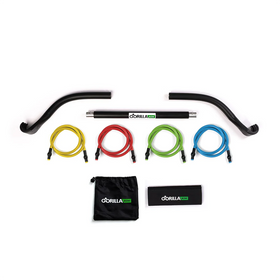
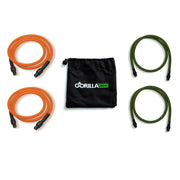
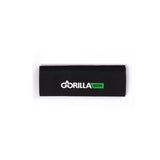
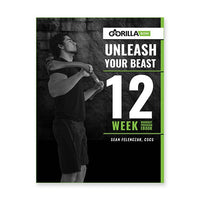
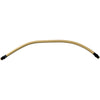



Leave a comment